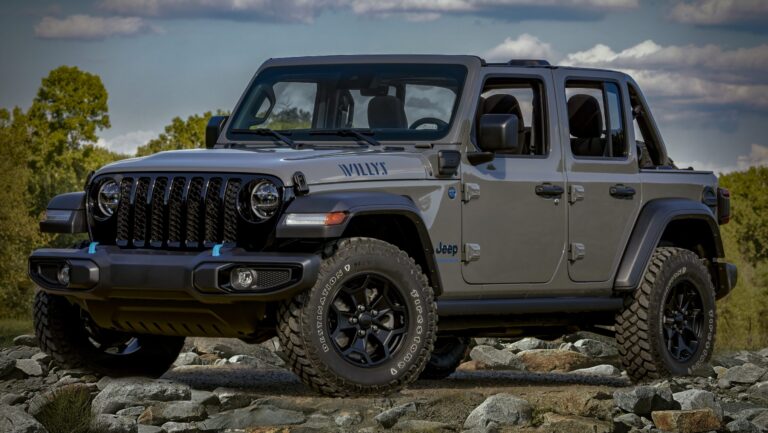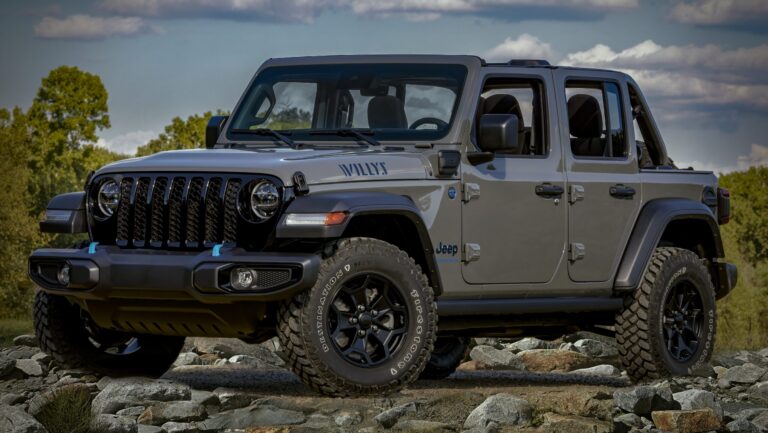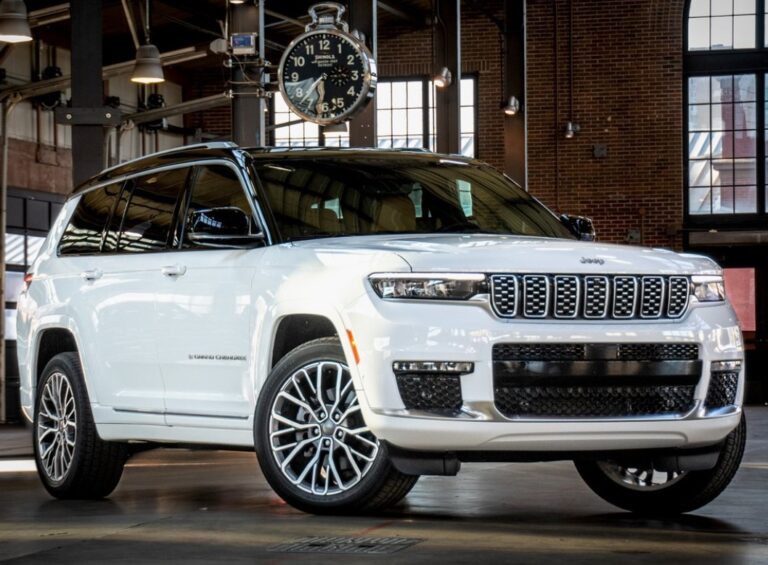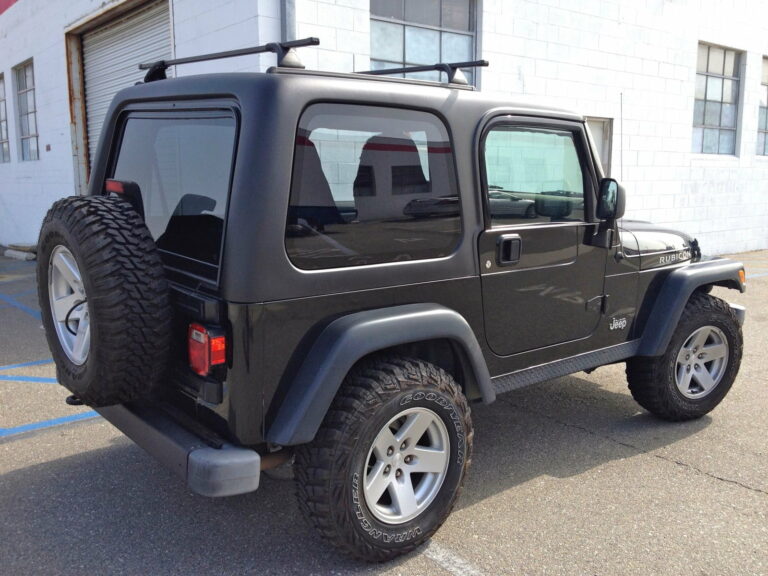1999 Jeep Cherokee For Sale: A Comprehensive Buyer’s Guide to an Enduring Icon
1999 Jeep Cherokee For Sale: A Comprehensive Buyer’s Guide to an Enduring Icon jeeps.truckstrend.com
The 1999 Jeep Cherokee, often referred to by its chassis code "XJ," isn’t just another used car; it’s a bona fide automotive legend. Representing the pinnacle of the XJ generation’s production run, the ’99 model encapsulates everything that made this compact SUV an enduring icon: rugged simplicity, unparalleled off-road capability, and a robust powertrain. For those seeking a vehicle that blends classic utility with a vibrant aftermarket and a passionate community, a 1999 Jeep Cherokee for sale presents a compelling opportunity. This comprehensive guide aims to arm prospective buyers with the knowledge needed to navigate the market and secure a piece of automotive history.
Why the 1999 Jeep Cherokee Remains a Sought-After Classic
1999 Jeep Cherokee For Sale: A Comprehensive Buyer’s Guide to an Enduring Icon
The XJ Cherokee’s enduring appeal stems from a combination of design brilliance and mechanical resilience that few vehicles have ever matched. The 1999 model year benefits from years of refinement while retaining the core attributes that define its legacy.
- Legacy of the XJ: Introduced in 1984, the XJ pioneered the modern SUV concept – a unibody design that blended car-like handling with true off-road prowess. By 1999, the design had matured, offering a comfortable yet capable package that stood in stark contrast to the larger, less nimble SUVs emerging at the time. Its boxy, utilitarian aesthetic remains timeless and instantly recognizable.
- Durability and Reliability: At the heart of most 1999 Cherokees is the legendary 4.0-liter "PowerTech" inline-six engine. Known for its virtually bulletproof reliability and impressive torque (190 horsepower and 225 lb-ft), this engine is capable of racking up hundreds of thousands of miles with proper maintenance. Paired with the robust Aisin-Warner AW4 automatic transmission (or the rarer AX-15 manual), the drivetrain is a testament to old-school engineering.
- Off-Road Prowess: Despite its compact footprint, the XJ is a formidable off-roader. Its unibody construction, combined with solid axles (Dana 30 front, Chrysler 8.25 or Dana 35 rear), short wheelbase, and excellent approach and departure angles, allows it to tackle trails that would stop many larger, more modern 4x4s in their tracks. Its relatively light weight also contributes to its agility on difficult terrain.
- Simplicity and Modifiability: The XJ is remarkably simple to work on, making it a favorite among DIY mechanics and enthusiasts. Its mechanical straightforwardness means repairs are often less complex and costly than on more modern vehicles. Furthermore, the aftermarket support for the XJ is immense, offering everything from lift kits and heavy-duty bumpers to engine upgrades, allowing owners to customize their Cherokee to their exact needs, whether for hardcore off-roading or subtle enhancements.
- Value Proposition: For its capabilities and iconic status, the 1999 Jeep Cherokee offers exceptional value. It provides an affordable entry point into the world of capable 4x4s, making it an attractive option for first-time off-roaders, weekend adventurers, or those simply looking for a dependable and characterful daily driver.

Key Features and Specifications of the 1999 Model Year
The 1999 Jeep Cherokee benefited from minor updates throughout its production run, making it a particularly desirable year for some enthusiasts.
- Engine: The ubiquitous 4.0L (242 cu in) PowerTech I6 engine, delivering 190 hp and 225 lb-ft of torque. This engine is renowned for its low-end torque, making it excellent for off-roading and daily driving alike.
- Transmissions: Most ’99 XJs came with the Aisin-Warner AW4 4-speed automatic transmission, known for its durability. A smaller number were equipped with the Aisin AX-15 5-speed manual transmission, which is highly sought after by purists.
- Transfer Cases: Two primary transfer cases were offered:
- NP231 Command-Trac: A part-time 4WD system, offering 2WD, 4-High Part-Time, Neutral, and 4-Low. Ideal for off-road use but not for paved surfaces in 4WD.
- NP242 Selec-Trac: A full-time 4WD system, providing 2WD, 4-High Full-Time (can be used on pavement), 4-High Part-Time, Neutral, and 4-Low. Offers more versatility for varying road conditions.
- Axles:
- Front: Dana 30 high-pinion (some late ’99 models might have low-pinion, a less desirable design for lifts).
- Rear: Chrysler 8.25 (29-spline, preferred for strength) or Dana 35 (weaker, generally avoided for heavy off-roading).
- Trim Levels: Available in various trims, each offering different levels of features and aesthetics:
- Sport: The most common and often preferred for its no-frills, rugged appeal.
- Classic: Added body-colored bumpers, specific wheels, and more interior amenities.
- Limited/Country: Top-tier trims with leather seating, power options, and more refined interior appointments.
What to Look For When Buying a 1999 Jeep Cherokee
Acquiring an XJ requires a keen eye and a thorough inspection, as even the most reliable vehicles can suffer from age and neglect.
- Rust is the Enemy: This is paramount. Inspect the unibody frame rails, particularly around the leaf spring mounts at the rear, rocker panels, floorboards, and fender wells. Significant rust can compromise structural integrity and be very costly to repair. Surface rust is common and manageable, but rot is a deal-breaker.
- Engine Health:
- Oil Leaks: The rear main seal is a common culprit for leaks. While not always critical, it indicates aging seals. Check valve cover gaskets and oil pan gaskets too.
- Cooling System: Overheating is a common XJ issue if not maintained. Check the radiator (look for leaks or green crust), water pump, thermostat housing, fan clutch, and hoses.
- Noise/Performance: Listen for knocks, ticks, or excessive valvetrain noise. Check for smooth idle and acceleration.
- Transmission and Transfer Case:
- Automatic (AW4): Check fluid color (should be red, not brown or black), smell (burnt smell is bad). Test all gears, including reverse, for smooth engagement and shifting.
- Manual (AX-15): Check clutch feel, gear engagement (no grinding), and shifter slop.
- Transfer Case (NP231/NP242): Engage all 4WD modes (2H, 4H, 4L) to ensure they work smoothly without grinding or binding.
- Suspension and Steering:
- "Death Wobble": A violent shaking of the front end at certain speeds. It’s almost always caused by worn steering or suspension components (track bar, tie rod ends, ball joints, control arm bushings). Inspect these components for play.
- Shocks and Springs: Check for leaks on shocks and sagging springs.
- Brakes: Test pedal feel (should be firm, not spongy), listen for grinding, and check for even braking. Inspect pads and rotors if possible.
- Electrical System: Test all power windows, locks, lights, gauges, HVAC system, and radio. XJs can develop quirky electrical gremlins.
- Interior: Check the condition of seats (tears, sagging), headliner (common to sag), and dashboard (prone to cracking). Ensure all seat belts function correctly.
- Maintenance Records: Ask for any available service history. A well-documented maintenance history is a strong indicator of a cared-for vehicle.
- Test Drive: Take it on various roads – highway, city, and if possible, a light trail. Listen for unusual noises, feel for vibrations, and assess overall drivability.
Common Challenges and Solutions for 1999 XJ Owners
While incredibly robust, the XJ is an older vehicle and will likely present some common issues. Knowing them beforehand can save you headaches.
- Rust: As mentioned, it’s the biggest threat. For minor issues, rust conversion and paint can help. For structural rust, professional welding is often required. Prevention is key: regular washing, especially in winter climates.
- Cooling System Issues: The 4.0L runs hot. Upgrades like a larger capacity radiator (e.g., all-aluminum), a heavy-duty fan clutch, and regular flushes are highly recommended.
- Oil Leaks (RMS): The rear main seal leak is common. While it can be a significant repair, many owners live with minor drips, simply topping off oil regularly. If severe, it’s worth fixing.
- "Death Wobble": This is almost always a symptom of worn steering and suspension components. Replacing worn track bar, tie rod ends, ball joints, and control arm bushings, along with a proper alignment, will usually resolve it.
- Electrical Gremlins: Often related to ground issues, old wiring, or faulty sensors. A factory service manual and a multimeter are invaluable for diagnosis.
- Fuel Economy: Expect 15-20 MPG. It’s a brick on wheels with a relatively large engine. Manage expectations accordingly.
- Aging Components: Be prepared to replace hoses, belts, sensors, and other wear-and-tear items as they age. This is part of owning any older vehicle.
Maximizing Your Investment: Tips for Finding the Right XJ
Finding the perfect 1999 Jeep Cherokee for sale requires patience and a strategic approach.
- Define Your Purpose: Are you looking for a daily driver, a weekend trail rig, or a full-blown project? This will dictate the condition you should prioritize and your budget. A rust-free daily driver will command a higher price than a rough project vehicle.
- Set a Realistic Budget: Beyond the purchase price, factor in immediate maintenance, potential repairs, and any desired modifications. Don’t spend your entire budget on the initial purchase.
- Research Locally and Online: Check popular classifieds like Craigslist, Facebook Marketplace, and dedicated Jeep forums (e.g., NAXJA, Cherokee Forum). Listings on enthusiast sites often provide more detail and pictures.
- Be Patient: Don’t jump on the first XJ you see. There are many out there, and the right one for you will eventually surface.
- Get a Pre-Purchase Inspection (PPI): If you’re not mechanically inclined, pay a trusted mechanic (preferably one familiar with Jeeps) to perform a thorough inspection. It’s a small investment that can save you from costly surprises.
- Negotiate Based on Condition: Use any identified flaws or necessary repairs as leverage for negotiation.
- Consider Location: Vehicles from arid climates (Southwest US) tend to have significantly less rust than those from the Rust Belt (Northeast/Midwest).
Price Guide for 1999 Jeep Cherokee For Sale
The price of a 1999 Jeep Cherokee varies wildly based on several factors, including condition, mileage, modifications, and geographical location. This table provides a general guideline:
| Aspect | Poor Condition (Parts/Project) | Fair Condition (Daily Driver) | Good Condition (Well-Maintained) | Excellent Condition (Collector/Low Miles) |
|---|---|---|---|---|
| Price Range (USD) | $1,000 – $3,000 | $3,000 – $6,000 | $6,000 – $10,000 | $10,000+ (Rare) |
| Mileage | 200,000+ | 150,000 – 200,000 | 100,000 – 150,000 | Under 100,000 |
| Rust Level | Significant structural rust | Moderate, some body/surface rust | Minor surface rust only | Minimal to none |
| Engine/Transmission | Needs significant work/Unknown | Functional, minor issues | Runs strong, well-maintained | Pristine, all systems checked |
| Interior Condition | Worn, damaged, major flaws | Usable, moderate wear & tear | Clean, minor wear & tear | Very clean, excellent condition |
| Modifications | Various, potentially poor quality | Mild, functional | Tasteful, well-executed | Stock or minimal, quality upgrades |
| Key Considerations | Best for experienced DIYers, parts source | Reliable transport, needs TLC | Solid base for daily driving/light off-road | Show car potential, premium value |
Note: Manual transmission models, particularly those with low mileage and minimal rust, can often command prices at the higher end of these ranges or even exceed them.
Frequently Asked Questions (FAQ)
Q: Is the 4.0L engine in the 1999 Jeep Cherokee really as reliable as people say?
A: Yes, the 4.0L PowerTech inline-six engine is legendary for its durability and longevity. With proper maintenance, it can easily last for hundreds of thousands of miles.
Q: What is "death wobble" and how serious is it?
A: "Death wobble" is a violent, uncontrollable shaking of the front end, typically occurring at highway speeds after hitting a bump. It’s a common issue but is almost always caused by worn steering and suspension components (e.g., track bar, tie rod ends, ball joints). It’s very serious if it happens while driving, but it is fixable by replacing the worn parts.
Q: Should I get a manual or automatic transmission?
A: This depends on personal preference. The AW4 automatic is highly durable and common. The AX-15 manual is rarer, offers more driver engagement, and is often preferred by serious off-roaders, but finding one in good condition can be challenging.
Q: What’s the difference between the NP231 and NP242 transfer cases?
A: The NP231 (Command-Trac) is a part-time 4WD system, meaning you can only use 4WD on loose or slippery surfaces. The NP242 (Selec-Trac) offers a "full-time" 4WD mode that can be used on pavement, making it more versatile for varying road conditions. Both are robust.
Q: How is the fuel economy of a 1999 Jeep Cherokee?
A: It’s not great. Expect around 15-20 miles per gallon (MPG) combined, depending on driving style, modifications, and vehicle condition. It’s a heavy, boxy vehicle with an older engine design.
Q: Is the 1999 Jeep Cherokee good for off-roading?
A: Absolutely! The XJ is one of the most capable stock off-road vehicles ever made. Its compact size, solid axles, and ample aftermarket support make it an excellent platform for both mild trail riding and serious rock crawling.
Q: What’s the most important thing to look out for when buying a used 1999 XJ?
A: Rust. Inspect the unibody frame rails, rocker panels, and floorboards thoroughly. Rust can compromise the vehicle’s structural integrity and be extremely expensive to repair.
Conclusion
The 1999 Jeep Cherokee remains a compelling choice for anyone seeking a blend of classic utility, genuine off-road capability, and a vehicle with an undeniable personality. Its legendary 4.0L engine, robust drivetrain, and simple, modifiable design ensure that it continues to be a favorite among enthusiasts. While buying an older vehicle always comes with considerations, a diligent inspection and a realistic understanding of its common quirks will pave the way for a rewarding ownership experience. For the right buyer, a 1999 Jeep Cherokee isn’t just a used SUV; it’s an invitation to join a passionate community and embark on countless adventures.




